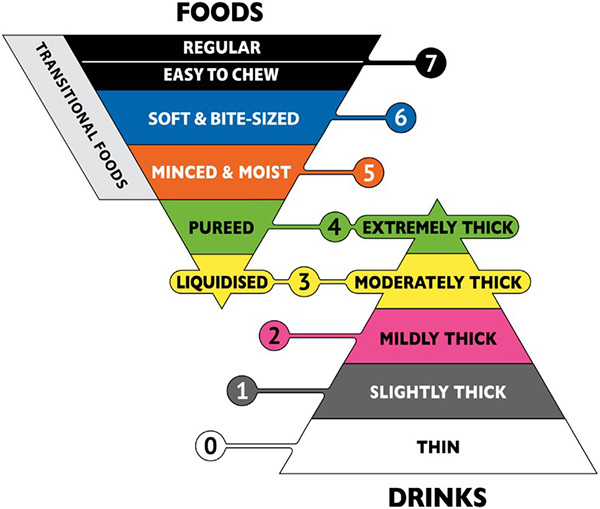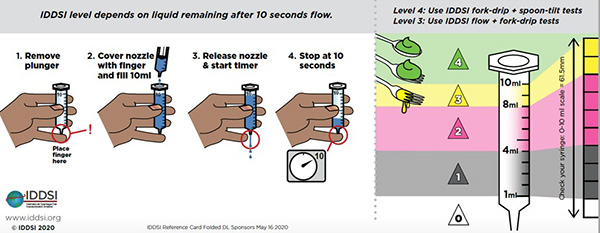Feeding a Child with Swallowing Difficulty (Dysphagia): Food and Fluid Modifications
KK Women’s and Children’s Hospital (KKH) Paediatric Neurology and Speech Therapy departments share how to modify consistency when preparing food for a child with swallowing difficulties (dysphagia).

Feeding a child with swallowing difficulty (dysphagia)
may require the parent or caregiver to modify food/fluid consistency to ensure safe swallowing.
What is food/fluid consistency modification?
It is a compensatory strategy to ensure swallowing is safe (i.e. reduce aspiration risk) when feeding a child with feeding and/or swallowing difficulties (dysphagia).
 This information is intended for general information. Please consult your speech therapist for specific advice. This information is intended for general information. Please consult your speech therapist for specific advice. |
Food and drinks consistency are classified using the IDDSI (International Dysphagia Diet Standardisation Initiative) classification system.

Food and drink consistency
0 Thin | |
1 Slightly Thick | |
2 Mildly Thick | |
3 Moderately Thick |
Can be drunk from a cup or taken with a spoon
Needs some effort to drink through a wide diameter straw and cannot be sucked through an infant teat/nipple
Has a smooth texture with no lumps, fibers or seeds
|
4 Extremely Thick |
Is usually eaten with a spoon
Cannot be drunk from a cup or sucked through a straw or infant teat/nipple
Does not require chewing
Has a smooth texture with no lumps
Holds shape on a spoon
Is not sticky
|
Flow tests are used to ensure that accurate modifications made to achieve desired thickness of fluid.

Types of food consistency
3 Liquidised | Can be eaten with a spoon or drunk from a cup Cannot be eaten with a fork because it drips through the fork prongs Has a smooth texture with no lumps
|
4 Pureed | Is usually eaten with a spoon Does not require chewing Has a smooth texture with no lumps Holds shape on a spoon Falls off a spoon in a single spoonful when tilted Is NOT sticky Liquid must not separate from solids
|
5 Minced and Moist | Soft and moist, but NO liquid leaking/dripping from food Biting is not required Minimal chewing is required Has lumps of 2mm in size, can be mashed with tongue Food can be mashed with just a little pressure from a fork Should be able to scoop food onto a fork with no liquid dripping and no crumbles falling off fork
|
6 Soft and Bite-sized | Soft, tender and moist, but with no thin liquid leaking/dropping from the food Does not require the ability to bite off a piece of food However, ability to chew bite-sized pieces is required Bite-sized pieces should be no larger than 8mm x 8mm Food can be mashed/broken down with pressure from fork A knife is not required to cut this food
|
7 Easy to Chew/Regular | Normal, everyday foods Any method can be used to eat these foods (e.g. using fingers, a fork, a spoon, chopsticks etc) Food consists of a range of sizes, appropriate for the child’s age and level of development
|
Ref: K21
Terms of Use / Disclaimer
All information provided within this web and mobile application is intended for general information and is provided on the understanding that no surgical and medical advice or recommendation is being rendered. Please do not disregard the professional advice of your physician.
